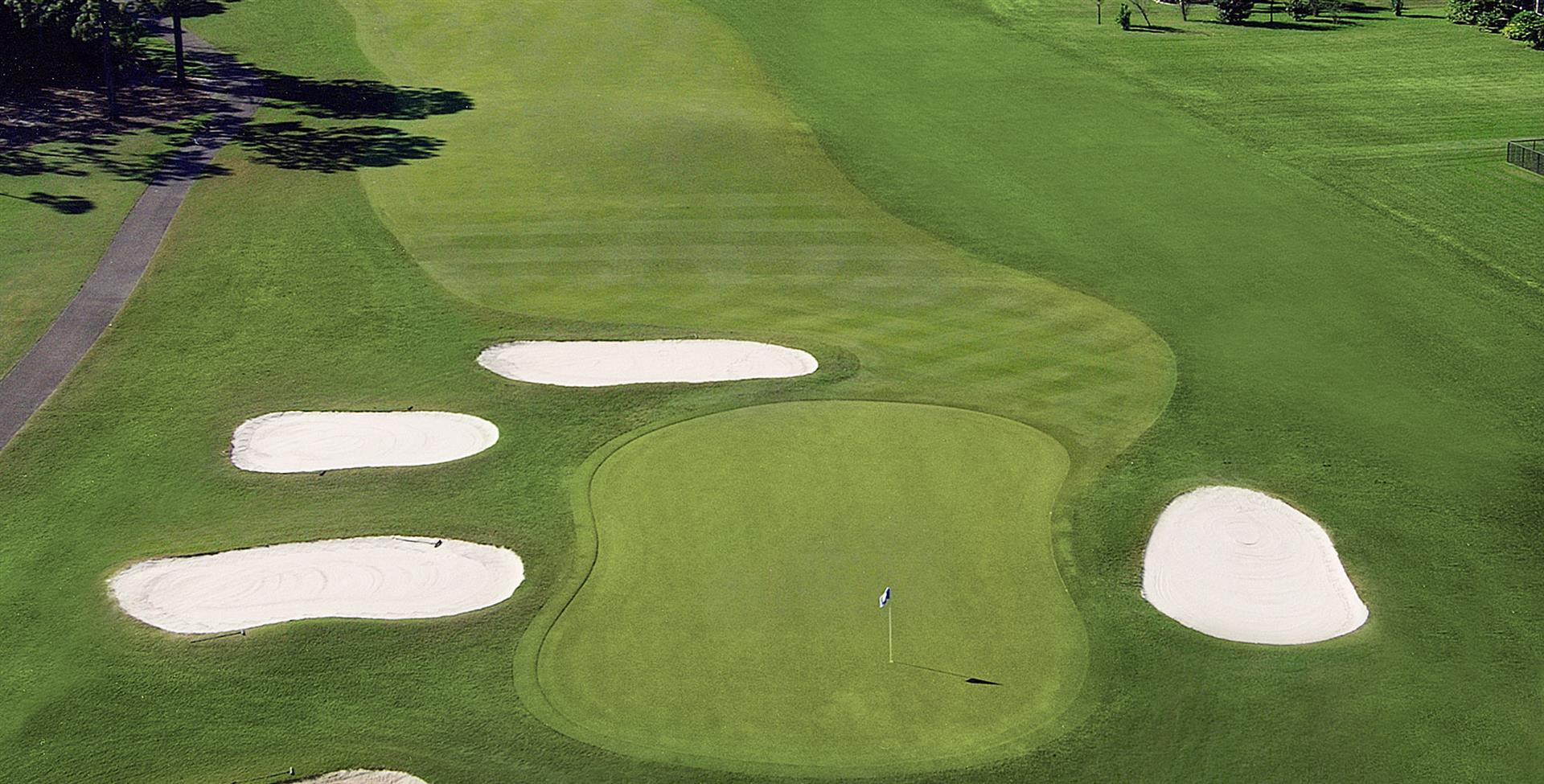Palmer Golf Tips
Set a Course for Success
Do you want to play like a legend? Get the lay-and-roll of the land with these Palmer golf tips from Leadbetter Certified Instructor, Matt Hilton.
#1 – The first hole of The Palmer is a long par 4, often playing into the wind. Avoiding the fairway bunkers off the tee is imperative, and be sure to leave your approach or 3rd shot short and right of the hole location to ensure an uphill putt.
#2 – With bunkers lining the right side and rear of this par 3, bias your tee shot a bit left. Beware of a back-pin location, where putts can appear to break towards the front of the green, but grain will slide your ball towards the back bunkers.
#3 – Use the stadium lights in the distance as a target off the tee. A tee shot to the left of them is safe from the right trees, but often leaves an approach over the very large bunker guarding the front left of the green.
#4 – Shorter hitters be sure to follow the natural shape of the fairway off the tee, but longer hitters can take a shot at carrying the left trees to cut a little off of this par 5. Use the two bunkers near greenside as targets for your lay-up, and look to leave yourself 75 – 95 yards left for your third.
#5 – One of the more difficult par 3s on the property, the 5th is a real test of ball striking and a player’s commitment. While the right side of the green appears safe from water and large bunkers guarding the left, those who bail out right will find very difficult pitches and putts waiting for them.
#6 – The fairway bunker up the left side is a more favorable miss than the out-of-bounds lurking up the right side. If you can keep your drive short of it, it makes the hole wider off the tee, and leaves you 150 – 160 yards into the green. This is one of the most level greens on the course, but there are plenty of challenges getting there.
#7 – This hole is one of my favorites. A great short par for that requires a lay-up to about 120 yards short of the green to avoid the water. Shorter hitters, I would advise you to lay-up as close as possible to the water, which starts about 90 yards short of green center. It will leave the easiest possible carry and help avoid a big number.
#8 – With 4 tall skinny trees in the background, focus on the right 2 and kick a field-goal between them off the tee. For your second shot, the storm shelter in the distance should be your target, with the goal of leaving 70 – 90 yards in for your third. This green has so much undulation going so many directions, do your best to leave yourself a manageable first putt.
#9 – Pick your poison: A drive hugging the right trees will leave you a short iron into the green if you can get it past the corner. A safer play off the tee up the left leaves a longer approach with a tougher angle dealing with the bunker short and left of the green.
#10 – Do your best to control your direction on this par 3, as the bunkers on either side can make scoring more troublesome. The green is split in 2 tiers, front lower and back upper, making it just as important to pay attention to the pin’s color and location.
#11 – The trees in the foreground to the left will tend to shift a golfer’s alignment right, but with a common wind from the left and out-of-bounds lurking, that would be an error on this dogleg par 4. There is more room up the left side than it appears. Attempt to leave your ball short and right of red and white pins on this green to leave uphill putts.
#12 – There are 2 distinct options off the tee on this short par 5: Hammer your best drive of the day left of the bunker for a chance to reach or get near the green in 2, or aim your tee shot well right of the bunker and trees to take a lot of the trouble out of play. Either way, have a clear plan in your head and commit to it!
#13 – This short par 3 commonly plays into the wind, and plays much longer than its humble yardage. Beware: With a red or white pin, shots hit pin high, but slightly right will have you reaching in your bag for another ball.
#14 – Aim your drive right over the 150 post in the center of the fairway, but be aware of your distance off the tee. Leaving a 110-yard approach to the green is ideal, with anything past that risking a wet tee-shot. Shots left short and left of pin locations should be straight uphill.
#15 – The tee on this par 4 leaves the player with a choice: Play to the left of the center bunkers and receive a wider landing area, but you’ll sacrifice distance in hitting away from the green. Playing to the right makes for a much more demanding shot, but is a more direct line to the hole and offers a nice flat stance for the short iron to follow. Leaving 125 yards to the green on either side is ideal to avoid bringing the water into play off the tee.
#16 – With the wind often in your face on this long par 4, a miss-hit tee shot will land your ball on an upslope sacrificing precious yardage, and making the approach much longer than it needs to be. Try to hug the left edge of the right fairway bunker to maximize yardage.
#17 – This slight, dogleg left gives the impression that a tee shot up the left will pay big gains in a shortcut to the green. All it does, however, is wake up the large trees on the left-hand side, waiting to swat down approaches attempting to pass through. Using the fairway bunker on the right as a target is a much more suitable choice. Shots left short and left of pin locations will yield uphill attempts on the green.
#18 – Only Hercules and Bob Hope have reached this amazing finishing par 5 in 2 (Hope simply because he was a good storyteller). For that reason, plan on a 3-shot par 5, with the second shot using the fountains in the distance for a line. Leaving 110 yards into the green for a 3rd is ideal, with anything more aggressive having a high probability of finding the water up short and left of the green.






